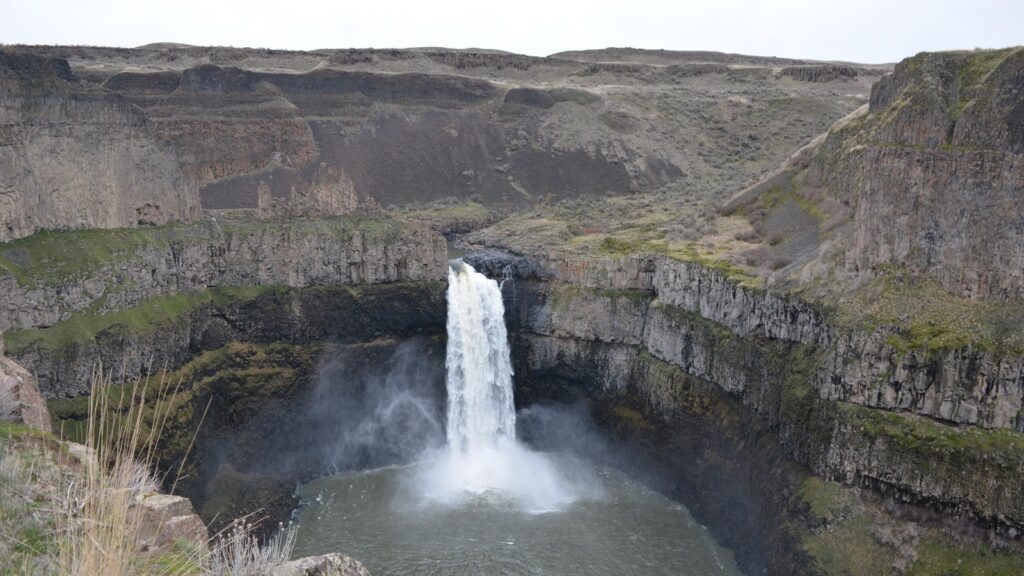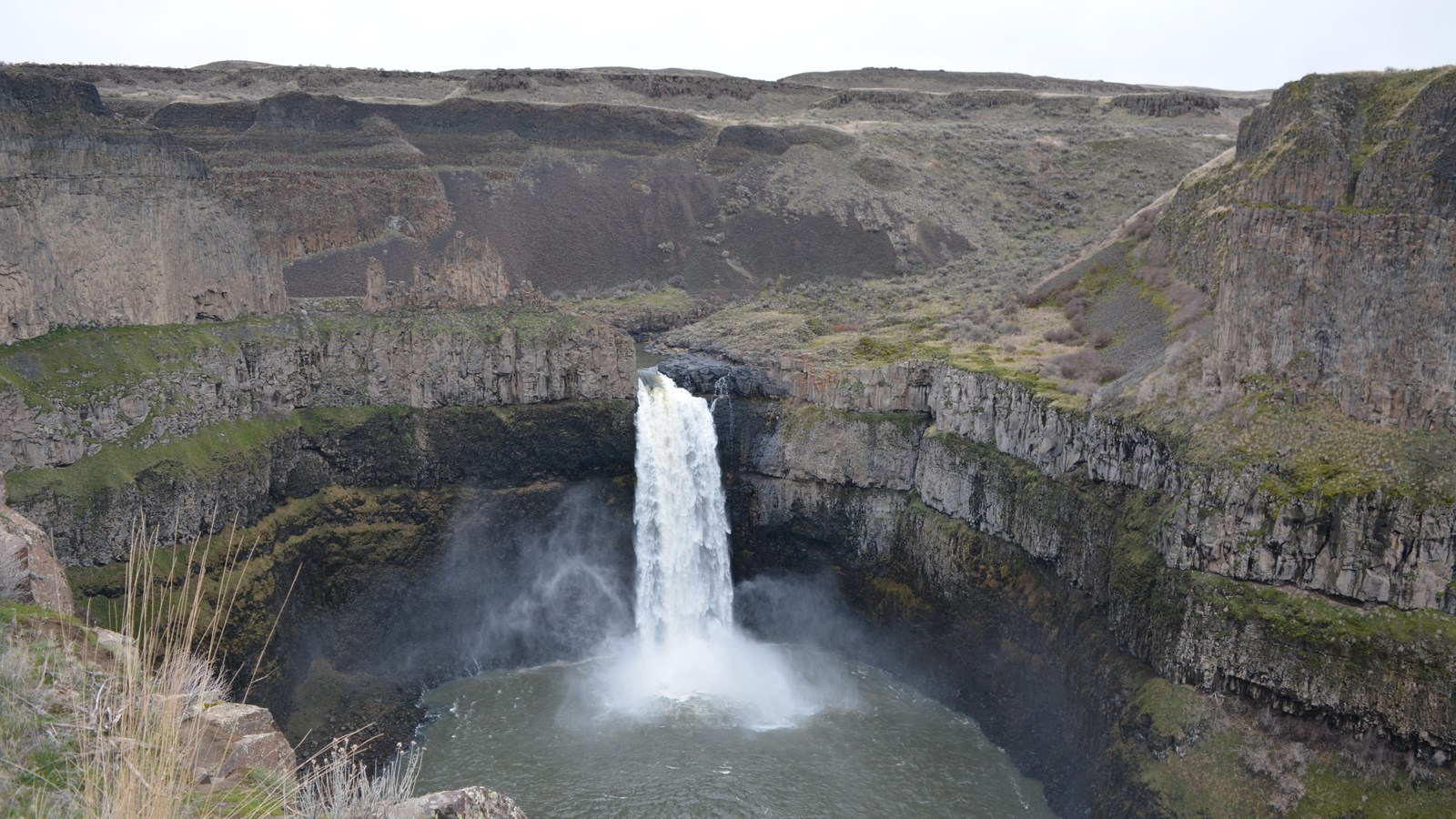Nestled in the heart of southeastern Washington, Palouse Falls is a breathtaking natural wonder that captivates visitors with its sheer beauty and dramatic landscapes. This Palouse Falls travel guide delves into the fascinating geological history, diverse flora and fauna, and numerous recreational activities that make Palouse Falls a must-visit destination. From its roaring waters to its scenic vistas, Palouse Falls offers an unforgettable experience for nature lovers and adventurers alike.

Table of Contents
The Formation of Palouse Falls
Palouse Falls was formed through a series of cataclysmic geological events, primarily driven by the Ice Age floods that swept across the region thousands of years ago. These floods, known as the Missoula Floods, were caused by the periodic rupture of an enormous ice dam, releasing vast amounts of water across the landscape. As the waters surged through the area, they carved deep channels and canyons, ultimately creating the dramatic 198-foot waterfall we see today.
One of the unique features of Palouse Falls is its impressive height and powerful water flow, which vary seasonally depending on precipitation and snowmelt. The falls plunge into a deep plunge pool, surrounded by rugged cliffs and basalt formations. This dramatic drop, combined with the roar of cascading water, creates a mesmerizing spectacle that draws visitors from far and wide.
Flora and Fauna of the Area
The area around Palouse Falls is home to a rich diversity of plant life, showcasing a variety of native species that thrive in this unique environment. Visitors can expect to see an array of wildflowers in the spring, including lupines, balsamroot, and Indian paintbrush, which blanket the landscape in vibrant colors. The seasonal changes also bring different plant species to the forefront, with lush greenery in the spring and summer giving way to the earthy tones of autumn.
Wildlife is abundant around Palouse Falls, offering numerous opportunities for nature observation. Birdwatchers will be delighted by the presence of various bird species, such as hawks, eagles, and songbirds, that inhabit the area. The falls and surrounding habitats also support a variety of mammals, including deer, coyotes, and small rodents, as well as amphibians like frogs and salamanders that thrive in the moist environments near the water.
Activities and Adventures
Palouse Falls State Park offers a variety of activities and adventures for visitors to enjoy. Hiking trails around the falls provide some of the best routes for exploring the area’s natural beauty. Trails vary in difficulty, catering to both casual walkers and experienced hikers. Safety tips for hiking in the area include wearing sturdy footwear, staying on marked trails, and carrying plenty of water.
Camping options near Palouse Falls range from basic tent sites to more developed campgrounds with facilities such as restrooms and picnic areas. These campsites offer a unique opportunity to immerse yourself in the natural surroundings and enjoy the tranquility of the park after the day-trippers have left. It’s important to check the availability of sites and make reservations in advance, especially during peak seasons.
Photography enthusiasts will find Palouse Falls to be a dream location, with numerous iconic shots waiting to be captured. The best times for photography are during sunrise and sunset, when the light casts a warm glow over the landscape and enhances the dramatic features of the falls. For the best photos, consider different vantage points around the park and be prepared for changing lighting conditions.
Cultural and Historical Aspects
Palouse Falls holds significant cultural and historical importance, particularly for the indigenous tribes who have lived in the region for centuries. The falls were a landmark for the Palus people, who utilized the area for fishing, gathering, and cultural ceremonies. Understanding the tribal history and cultural stories associated with Palouse Falls adds depth to the experience of visiting this remarkable site.
Early explorers and settlers also left their mark on the area, with historical accounts and settler stories providing a glimpse into the challenges and triumphs of those who ventured into this rugged landscape. Exploring these historical aspects can enhance your appreciation for the perseverance and ingenuity of the people who shaped the region’s history.
Seasonal Visits and Highlights
Palouse Falls offers unique experiences in every season, each highlighting different aspects of its natural beauty. In the spring and summer, the falls are at their most powerful, fueled by snowmelt and seasonal rains. This is also the best time to see the surrounding landscape covered in wildflowers, creating a vibrant and picturesque scene.
Autumn brings cooler weather and a different kind of beauty to Palouse Falls, with the foliage turning brilliant shades of red, orange, and yellow. The scenic drives around the park are particularly stunning during this time, offering plenty of photo opportunities and a more relaxed atmosphere compared to the busy summer months.
Winter transforms Palouse Falls into a serene wonderland, with the falls sometimes partially frozen and the landscape covered in a blanket of snow. While visiting in winter requires extra precautions due to icy conditions and colder temperatures, the unique winter scenery offers a tranquil and magical experience for those willing to brave the elements.
Conservation and Visitor Guidelines
Preserving the natural beauty and ecological integrity of Palouse Falls is a priority for state park initiatives and community involvement. Efforts include habitat restoration, wildlife monitoring, and educational programs aimed at promoting conservation awareness. Visitors can support these efforts by practicing responsible tourism and adhering to park guidelines.
Responsible tourism practices include following Leave No Trace principles, such as packing out all trash, staying on designated trails, and respecting wildlife. By minimizing your impact on the environment, you help ensure that Palouse Falls remains a pristine and enjoyable destination for future visitors.
Planning Your Trip to Palouse Falls
Planning your trip to Palouse Falls involves considering several practical aspects to ensure a smooth and enjoyable visit. Getting there is relatively straightforward, with directions available from major cities like Spokane and Pullman. The park is accessible by car, and transportation options include renting a vehicle or joining a guided tour.
Nearby accommodations range from hotels in nearby towns to campgrounds within the state park. Whether you prefer the comfort of a hotel room or the adventure of camping under the stars, there are lodging options to suit every preference. It’s advisable to book accommodations in advance, especially during peak travel seasons.
Packing essentials for your trip to Palouse Falls includes bringing appropriate clothing for the season, sturdy hiking boots, a camera for capturing the stunning scenery, and plenty of water and snacks. Depending on the time of year, additional items such as sunscreen, insect repellent, and warm layers may be necessary to ensure a comfortable and safe visit.
Conclusion To Palouse Falls Travel Guide
Palouse Falls stands as a majestic testament to the natural beauty and geological history of Washington State. This Palouse Falls travel guide has explored the many facets of the falls, from its formation and unique features to the diverse flora and fauna that inhabit the area. Whether you’re hiking the trails, capturing the perfect photograph, or simply soaking in the breathtaking views, Palouse Falls offers an unforgettable experience that highlights the splendor of the natural world. By practicing responsible tourism and supporting conservation efforts, visitors can help preserve this spectacular waterfall for future generations. Plan your visit today and discover the magic of Palouse Falls.

